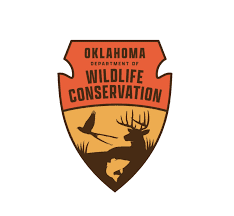Turkey Researchers Plan for Upcoming Capture Season

Wild turkey genetics, nesting success, and brood survival are among the research topics in a 4.5-year, $2 million study launched in 2022 by the Oklahoma Department of Wildlife Conservation, the Oklahoma Cooperative Fish and Wildlife Research Unit, and partnering with National Wild Turkey Federation, Turkeys For Tomorrow, Muscogee (Creek) Nation, Cherokee Nation, Choctaw Nation, and private landowners to address wild turkey population dynamics Following is a summary of recent study activities.
Project investigators attended the annual conference of The Wildlife Society in Louisville, Ky., where graduate student researcher Nicolle De Filippo presented on vital rates in southeastern Oklahoma. At the conference, Anna Moeller, Ph.D., also presented on a joint turkey modeling project with several project investigators.
Additionally, the turkey research project received recognition in a Thanksgiving Day article by The New York Times (nytimes.com/2023/11/23/us/turkey-population-declines-oklahoma.html?unlocked_article_code=1.B00.U3Yz.AWC6HBQu97-o&smid=url-share).
We also received confirmation from E-obs that the project’s order for 40 new transmitters is set to ship in mid-December.
GENETICS STUDY: Researchers have been evaluating genomic data. An initial analysis is being run to assess data quality and determine if further processing is needed. This analysis involves examination of genetic structure to identify genomic clusters and collect preliminary information. Further, graduate student researcher Michael Barrett submitted an abstract to present research at the Texas Chapter of The Wildlife Society’s 2024 meeting.
SOUTHWESTERN OKLAHOMA POPULATION STUDY AREA: Southwestern team leader Cody Griffin presented study information at the Oklahoma Cooperative Fish and Wildlife Research Unit Annual Cooperators Meeting. The team continued preparations for winter captures. Candidate interviews for technician positions resulted in two hirings. Also, an OSU student was hired to help locate new trapping sites and for animal identification on camera trap images. The team calibrated accelerometers on all transmitters on hand.
SOUTHEASTERN OKLAHOMA POPULATION STUDY AREA: Southeastern team leader Cyrena Bedoian continued preparations for winter captures, and refined objectives and the camera deployment plan for the upcoming field season. The team calibrated accelerometers on all transmitters on hand. Interviews resulted in the hiring of two technicians.
(Financial support for this publication was provided by the Oklahoma Department of Wildlife Conservation through the Wildlife Restoration Program, F21AF02702 [W-216-R-1] and Oklahoma State University.)





